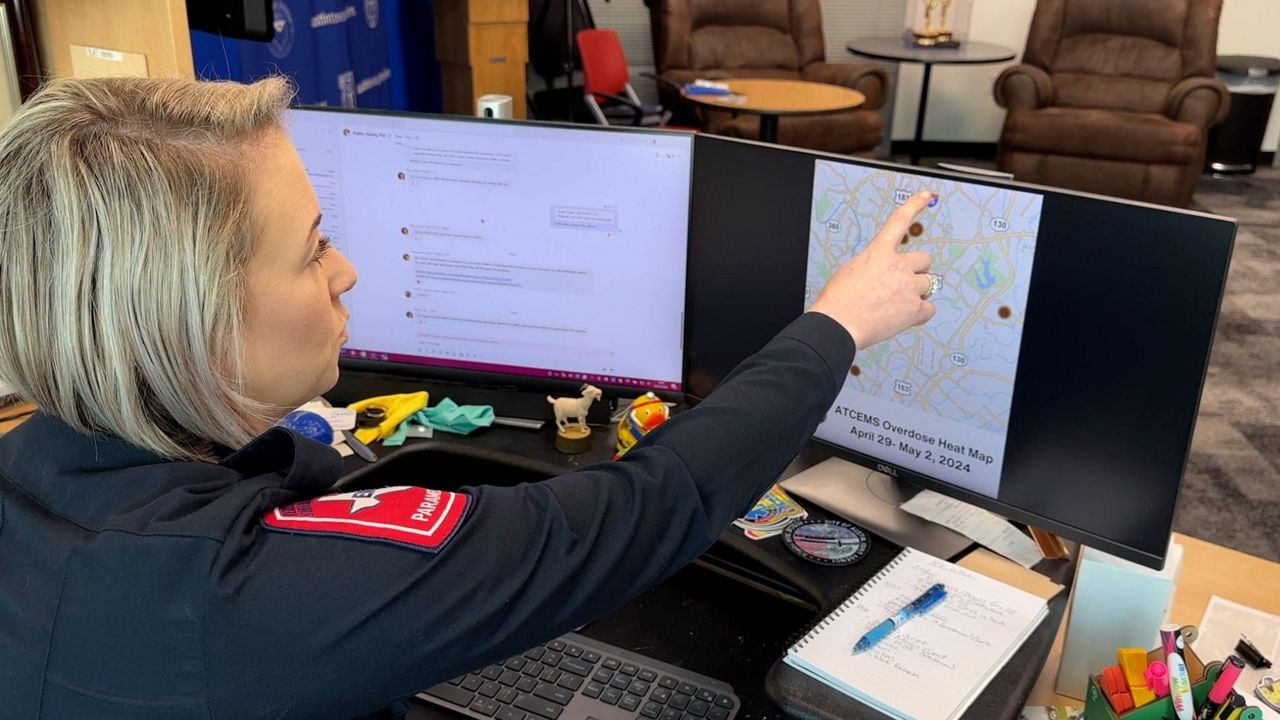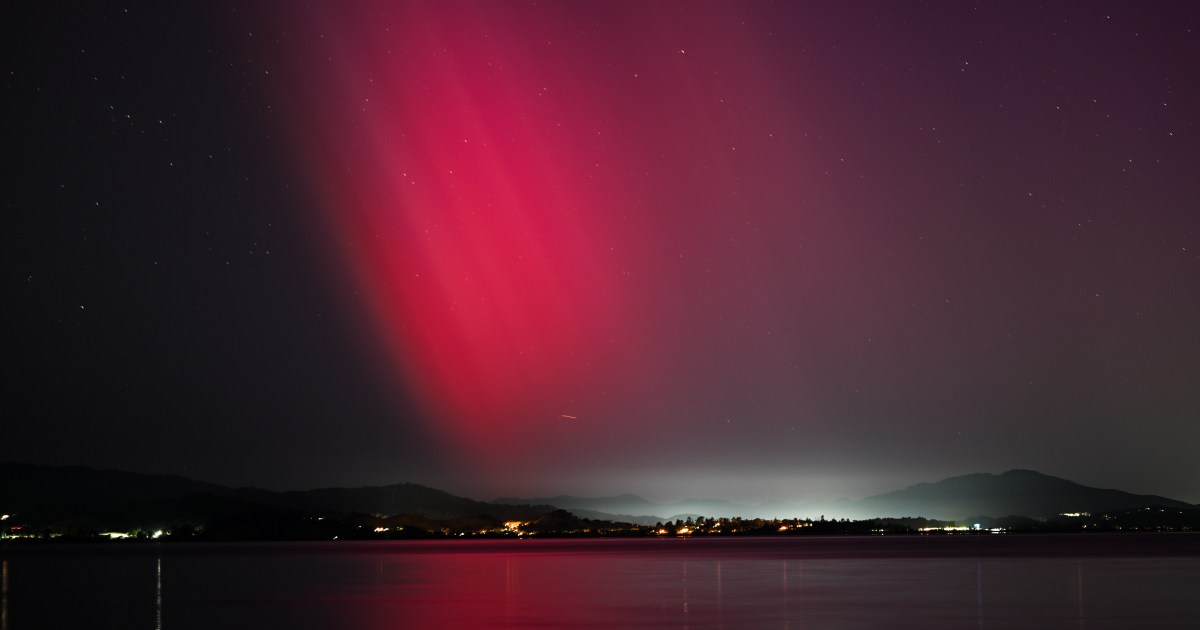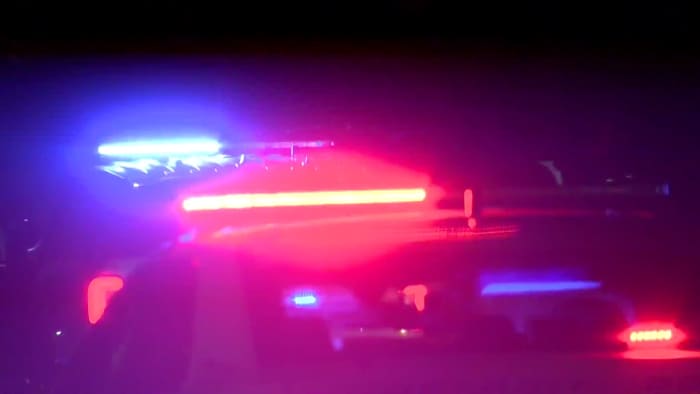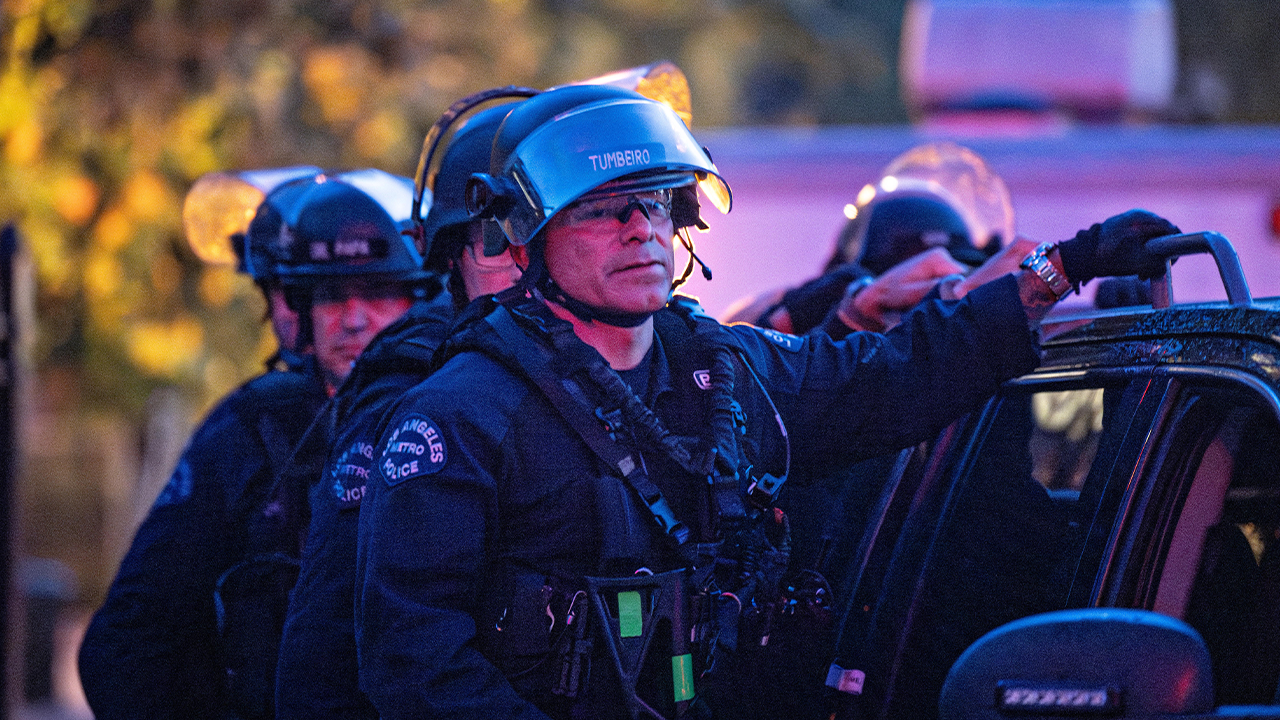World
Israel-Gaza war on US campuses: Why are top university leaders under fire?
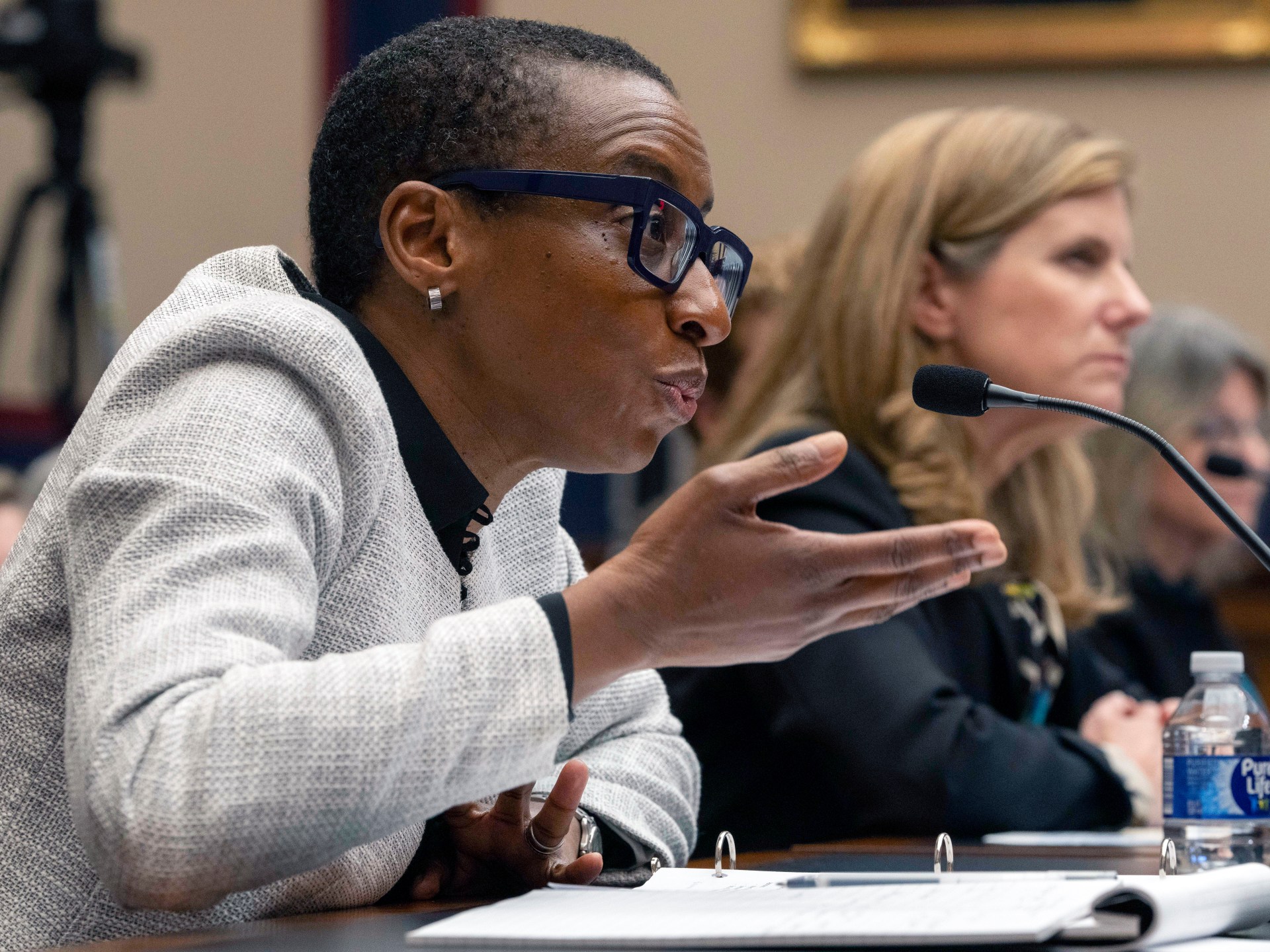
Leaders at the three top universities in the United States have faced calls to resign after their testimony before a congressional hearing on campus anti-Semitism set off a firestorm of criticism.
On Tuesday, Harvard University announced it would keep political scientist Claudine Gay as its president, after her counterpart at the University of Pennsylvania, Elizabeth Magill, stepped down over the weekend.
Gay, Magill and Sally Kornbluth, the president of the Massachusetts Institute of Technology (MIT), have all faced a backlash since their joint appearance before Congress on December 6, where they were asked how they would address anti-Semitism at their universities.
Republican Representative Elise Stefanik grilled the academic leaders for offering evasive answers about whether calls for the “genocide of Jews” violated their schools’ codes of conduct.
“Calling for the genocide of Jews is dependent on the context?” Stefanik said incredulously in response to their answers. “That is not bullying or harassment? This is the easiest question to answer yes.”
Fears over anti-Semitism and other forms of hate have spiked since the start of the Israeli war in Gaza on October 7, which sparked widespread campus protests in the US.
As pro-Israel and pro-Palestinian protesters clashed, university leaders faced scrutiny over what speech is protected on school grounds – and what, if anything, should be limited.
Let’s take a look at the congressional hearing and why the presidents’ testimonies have drawn bipartisan backlash, including from the White House:
Why was the hearing held?
Jewish advocacy group Anti-Defamation League and some other similar groups have warned that anti-Semitism is on the rise on US campuses, particularly since the start of the Gaza war. The staunchly pro-Israel group, however, has been accused of conflating the criticism of Israel with anti-Semitism.
And the Department of Education has opened investigations into more than a dozen universities since the war began, citing possible “discrimination involving shared ancestry” – an umbrella term that covers both anti-Semitism and Islamophobia.
Politicians, particularly on the right, have pointed to those reports as evidence that the liberal atmosphere on college campuses has gone too far.
Pro-Israel groups have deemed student chanting of the slogan, “from the river to the sea”, to be pro-Hamas, but analysts say the term has more complex roots. They say the phrase is an expression of the Palestinian desire for freedom from oppression across the historical land of Palestine.
On December 6, the House Committee on Education and Labor held a hearing to address concerns about campus anti-Semitism, calling on Gay, Magill and Kornbluth to speak.
“Today, each of you will have a chance to answer to and atone for the many specific instances of vitriolic, hate-filled anti-Semitism on your respective campuses,” Republican Representative Virginia Foxx told the university presidents.
She added that the tense atmosphere denies students “the safe learning environment that they are due”.
What happened at the hearing?
The three university presidents testified at the five-hour-long hearing, addressing how they balanced free speech with concerns for campus safety.
But it was their interaction with Stefanik towards the end of the hearing that fuelled viral outrage.
Stefanik pressed the three leaders about whether calling for the genocide of Jews would be considered harassment, insisting on direct answers. In one such exchange, she posed a hypothetical question to Magill: “Does calling for the genocide of Jews violate Penn’s rules or code of conduct, yes or no?”
Magill said it would depend on the context. “If the speech turns into conduct, it can be harassment, yes.”
“I am asking, specifically, calling for the genocide of Jews, does that constitute bullying or harassment?” Stefanik said.
“If it is directed and severe, pervasive, it is harassment,” Magill answered.
“So the answer is yes,” Stefanik said, appearing exasperated.
All three presidents refused to issue blanket statements that calling for genocide would constitute conduct violations. At one point, Gay said terms like “intifada” – the Arabic word for “uprising” – were “personally abhorrent”, but she underscored her support for “free expression, even of views that are objectionable”.
Why did the testimonies spark controversy?
Much of the outrage stemmed from the fact that the university presidents did not unequivocally condemn calls for genocide, thereby appearing tolerant of hate speech.
Tom Ginsburg, a professor of law at the University of Chicago, said the presidents came across as “lawyered”, “defensive” and perhaps “out of touch”.
However, he said, “in substance, it’s not clear that anything any of them said was wrong or inaccurate”. The presidents were simply reflecting the broad protections for free speech afforded under the First Amendment of the US Constitution.
“We live in a country where you can call for the genocide of groups and, if you’re not imminently going to cause them harm, that’s legal,” he explained.
“Go on to Twitter. It happens all the time. So [the presidents] were trying to talk about their policies, obviously, in a way which preserved their ability to say that they were applying the First Amendment.”
What kind of speech is limited on US campuses?
Zach Greenberg, a First Amendment lawyer with the Foundation for Individual Rights and Expression (FIRE) advocacy group, explained that the university presidents had to navigate a fine legal distinction in their testimonies.
The US Constitution includes sweeping protections for “political speech”, which can comprise, in extreme cases, discussions or even the advocacy of violence. But it does not protect speech that veers into threats and harassment.
The distinction is that unprotected speech represents a “serious intent to commit unlawful violence and becomes a pattern of severe, pervasive, offensive conduct that detracts a student from having an education”, Greenberg explained.
But private universities, like Harvard and MIT, have the power to go further in restricting speech, he added. They have the right “to set their own policies and determine what standard of free speech they’re going to give to their students”.
Still, free speech is the norm on most US campuses, which have traditionally been hotbeds for political activism, Greenberg said.
“The vast majority of private schools, especially liberal arts universities and Ivy League schools like your Harvard, Yale or MIT, they promise students robust free speech rights, consistent with the First Amendment.”
“The University of Pennsylvania, for example, and its policies, basically say, ‘We are guided by the US Constitution. This is a standard we’re going to apply when determining what right students have on campus.’ So students at these universities are led to believe that the limits of their rights would be those of the First Amendment.”
What has been the public reaction?
All three presidents have faced intense criticism, with some students, alumni and activists calling for their resignations.
Dozens of US politicians, including high-level Democrats, have also condemned the presidents’ words.
“It’s unbelievable that this needs to be said: Calls for genocide are monstrous and antithetical to everything we represent as a country. Any statements that advocate for the systematic murder of Jews are dangerous and revolting – and we should all stand firmly against them,” White House spokesperson Andrew Bates said in a statement last week.
Donors have also threatened to stop funding the universities. Billionaire hedge fund manager Bill Ackman denounced Gay in particular, saying in an open letter that she has done more damage to Harvard’s reputation than anyone in the university’s history. He also suggested she was hired to fulfil diversity criteria.
Still, some observers have leapt to Gay’s defence. More than 700 Harvard faculty members have signed a petition urging the school’s board to resist calls for her removal, a call that was ultimately successful.
What have the school presidents said since the hearing?
Gay has apologised for her remarks in the hearings.
She told the Harvard Crimson newspaper on Thursday: “What I should have had the presence of mind to do in that moment was return to my guiding truth, which is that calls for violence against our Jewish community – threats to our Jewish students – have no place at Harvard and will never go unchallenged.”
Magill, meanwhile, followed her testimony up with a video statement on the University of Pennsylvania’s website.
“I want to be clear, a call for genocide of Jewish people is threatening – deeply so,” she said. “In my view, it would be harassment or intimidation.”
Did the presidents keep their jobs?
Harvard’s board announced on Tuesday that Gay would remain in her role despite the backlash. MIT’s board also said last week that it stood by Kornbluth. Magill, meanwhile, stepped down from her post amid pressure.
What does the situation spell for the future of free speech at US universities?
Before her resignation as head of the University of Pennsylvania, Magill called on school administrators to “initiate a serious and careful look at our policies”.
Ginsburg, the law professor at the University of Chicago, called her words “maybe the scariest” part of the whole imbroglio. To him, it signalled a possible backslide from the school’s commitment to freedom of speech.
“We have to get rid of ideological constraints on universities, whether those come from inside the university, by politicised departments, or from outside the university – from politicians who want to make hay and get votes out of them,” he said.
Ginsburg added that revising campus rules on free speech could end up silencing “actual discussion of Israel and Palestine policy”.
“It’s a major issue of public policy. We can’t take that off the table just because of some pressure from donors and such,” he said.
Greenberg, the First Amendment lawyer, echoed those concerns, though he hoped the public discussion would prompt schools instead to shore up their free speech protections.
“We are worried that this will create a pushback against free speech and open the door toward more censorship,” he explained.
“If universities are going to water down their free speech policies to punish students for saying, ‘From the river to the sea’, for protesting Israel, for talking about this conflict, that would be a backward step.”

World
Minnesota unfurls new state flag atop the capitol for the first time Saturday
ST. PAUL, Minnesota (AP) — Minnesota officially unfurled its new state flag atop the capitol for the first time Saturday on statehood day.
The new flag and accompanying state seal were adopted to replace an old design that Native Americans said reminded them of painful memories of conquest and displacement.
The new symbols eliminate an old state seal that featured the image of a Native American riding off into the sunset while a white settler plows his field with a rifle at the ready. The seal was a key feature of the old flag. That’s why there was pressure to change both.
Officials didn’t pick any of the most popular designs submitted online that included options like a loon — the state bird — with lasers for eyes.
Instead, the new design adopted in December features a dark blue shape resembling Minnesota on the left, with a white, eight-pointed North Star on it. On the right is a light blue field that to those involved in the selection process symbolizes the abundant waters that help define the Land of 10,000 Lakes.
The new state seal features a loon amid wild rice.
World
2 ISIS militants suspected in 2014 massacre of Iraqi soldiers turned over to Baghdad
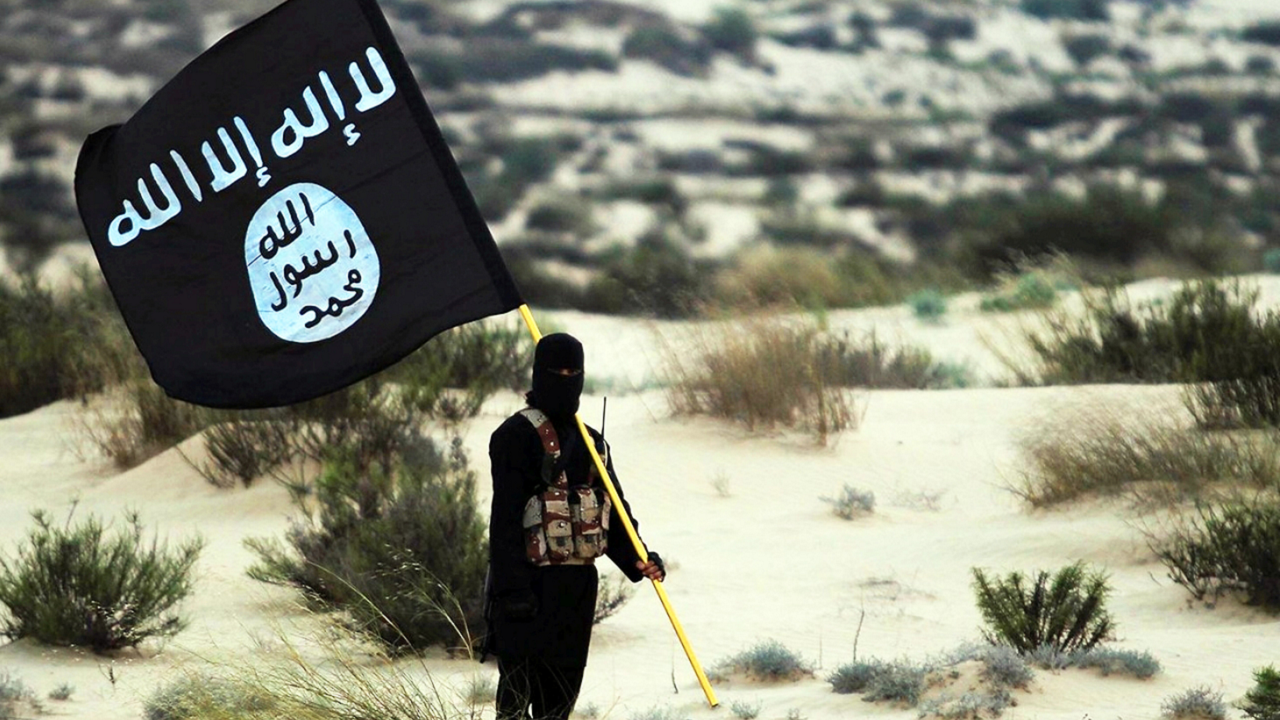
Syria’s U.S.-backed Kurdish-led force has handed over to Baghdad two Islamic State group militants suspected of involvement in mass killings of Iraqi soldiers in 2014, a war monitor said Friday.
The report by the Syrian Observatory for Human Rights came a day after the Iraqi National Intelligence Service said it had brought back to the country three IS members from outside Iraq. The intelligence service did not provide more details.
The Islamic State group captured an estimated 1,700 Iraqi soldiers after seizing Saddam Hussein’s hometown of Tikrit in 2014. The soldiers were trying to flee from nearby Camp Speicher, a former U.S. base.
ISIS CLAIMS RESPONSIBILITY FOR BOMBING THAT KILLED A DOZEN POLICE OFFICERS IN AFGHANISTAN
Shortly after taking Tikrit, IS posted graphic images of IS militants shooting and killing the soldiers.
Farhad Shami, a spokesman for the Kurdish-led Syrian Democratic Forces, said the U.S.-backed force handed over two IS members to Iraq. It was not immediately clear where Iraqi authorities brought the third suspect from.
A masked Islamic State soldier poses holding the ISIS flag in 2015. (Pictures from History/Universal Images Group via Getty Images)
The 2014 killings, known as the Speicher massacre, sparked outrage across Iraq and partially fueled the mobilization of Shiite militias in the fight against IS, a Sunni extremist group.
Iraq has over the past several years put on trial and later executed dozens of IS members over their involvement in the Speicher massacre.
The Observatory said the two IS members were among 20 captured recently in a joint operation with the U.S.-led coalition in the northern Syrian city of Raqqa, once the capital of the Islamic State group’s self-declared caliphate.
Despite their defeat in Iraq in 2017 and in Syria in March 2019, the extremists sleeper cells are still active and have been carrying out deadly attacks against SDF and Syrian government forces.
Shami said a car rigged with explosives and driven by a suicide attacker tried Friday night to storm a military checkpoint for the Deir el-Zour Military Council, an Arab majority faction that is part of the SDF, in the eastern Syrian village of Shuheil. Shami said that when the guards tried to stop the car, the attacker blew himself up killing three U.S.-backed fighters.
No one immediately claimed responsibility but the attack but it was similar to previous such explosions carried out by IS militants.
The SDF is holding over 10,000 captured IS fighters in around two dozen detention facilities, including 2,000 foreigners whose home countries have refused to repatriate them. The force says fighters of about 60 nationalities had entered Syria years ago and were captured in battle.
Kurdish authorities in northeastern Syria have said they will put on trial IS detainees, though it is not clear when such trials would begin.
World
Hamas says a captive has died of wounds sustained in Israeli air strike

British-Israeli Nadav Popplewell was taken captive from Nirim kibbutz by Palestinian group Hamas on October 7.
Hamas’s armed wing, the Qassam Brigades, has said British-Israeli captive Nadav Popplewell died of wounds sustained in an Israeli air strike a month ago.
The group’s announcement on Saturday came just hours after the Palestinian group released an 11-second video showing Popplewell with a bruised eye.
In the video republished on social media and cited by Israeli news outlets, a man is seen wearing a white T-shirt and he introduces himself as 51-year-old Nadav Popplewell from the Nirim kibbutz in southern Israel.
Superimposed text in Arabic and Hebrew reads: “Time is running out. Your government is lying.”
Popplewell was taken captive in Nirim during the Hamas-led attack on October 7, according to Israel’s Ynet news site. His mother was also taken as a captive but later released during the exchange of captives and prisoners by Hamas and Israel last year. Popplewell’s brother was killed in the attack, Ynet reported.
The video posted on Saturday on the Telegram channel of Hamas’s armed wing is the third time in less than a month the group has released footage of captives held in Gaza.
On April 27, Hamas released a video showing two captives alive – Keith Siegel and Omri Miran. Three days earlier it also broadcast another video showing captive Hersh Goldberg-Polin alive.
The videos come amid growing domestic pressure on the Israeli government to secure the release of the remaining captives.
Reporting from Amman, Al Jazeera’s Stefanie Dekker, said this tactic of releasing videos of captives on a Saturday, when protests take place in Tel Aviv, is a way of pressurising the Israeli government.
“This is what’s been a drip-feed if you will from Hamas. Where, by releasing videos, at times showing hostages dead, they are trying to put pressure on the Israeli government,” she said.
“But this hasn’t really changed the policies of [the Israeli] government.”
On Saturday, the Hostages and Missing Families Forum in Israel released a statement calling on the Israeli government to strike a deal with Hamas in order to secure the release of captives.
“Every sign of life received from the hostages held by Hamas is another cry of distress to the Israeli government and its leaders,” the families’ group said in its statement.
“We don’t have a moment to spare! You must strive to implement a deal that will bring them all back today.”
Relatives of the captives also accused Prime Minister Benjamin Netanyahu of not caring about those being held in Gaza and called on Netanyahu to resign.
“There is no victory and can be no victory without the return of the hostages,” a spokesperson said at a press conference in Tel Aviv on Saturday afternoon.
Despite the immense pressure, Netanyahu and his government have so far failed to strike a deal with Hamas.
Some 1,139 people were killed on October 7 when Hamas and allied fighters attacked southern Israel, and 250 captives were also taken to the Gaza Strip. Israeli officials say 128 of them are still being held in the Palestinian territory, including 36 who are dead.
Israel’s seven-month military campaign in Gaza has so far killed at least 34,971 people and wounded 78,641 others.
-

 News1 week ago
News1 week agoPolice enter UCLA anti-war encampment; Arizona repeals Civil War-era abortion ban
-

 Politics1 week ago
Politics1 week agoThe White House has a new curator. Donna Hayashi Smith is the first Asian American to hold the post
-

 News1 week ago
News1 week agoSome Florida boaters seen on video dumping trash into ocean have been identified, officials say
-

 Education1 week ago
Education1 week agoVideo: President Biden Addresses Campus Protests
-
)
) Movie Reviews1 week ago
Movie Reviews1 week agoThe Idea of You Movie Review: Anne Hathaway’s honest performance makes the film stand out in a not so formulaic rom-com
-

 World1 week ago
World1 week agoUN, EU, US urge Georgia to halt ‘foreign agents’ bill as protests grow
-

 World1 week ago
World1 week agoIn the upcoming European elections, peace and security matter the most
-

 World1 week ago
World1 week agoArizona Senate repeals near-total 1864 abortion ban in divisive vote





